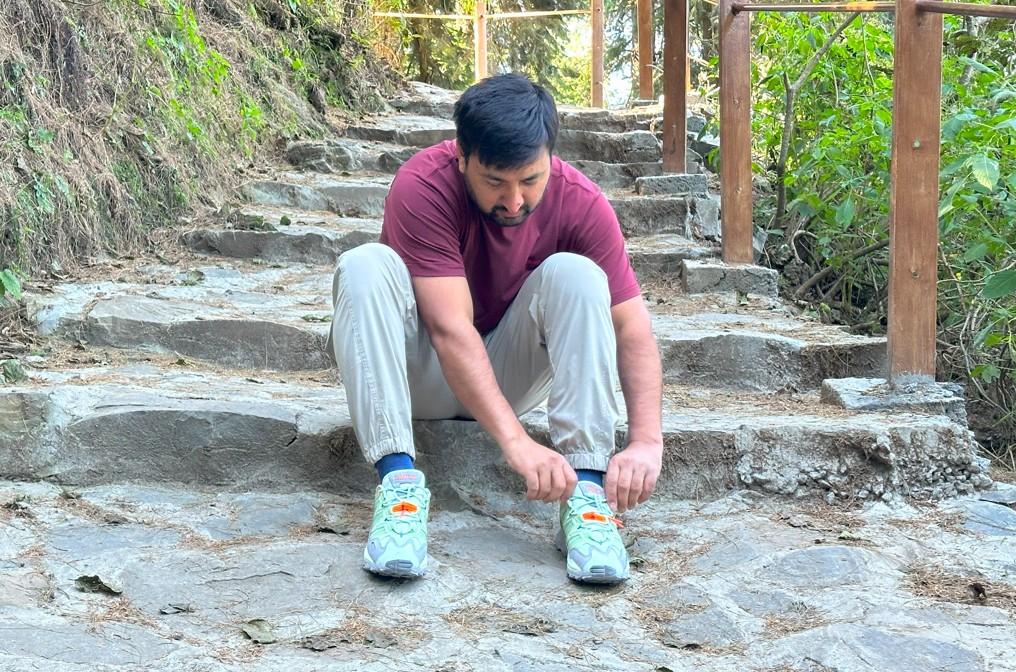Boot laces wear out with heavy usage, especially laces that come with the new boots. Unfortunately, some top brands don’t focus much on the quality of the laces despite delivering quality boots. Over the years of hiking, I have worn hiking boots and shoes from reputable brands such as Salomon, Columbia, and Adidas. I was disappointed with the quality of the laces, particularly in Adidas hiking shoes, such as the Adidas Hyperturf Adventure shoes.
On many occasions, I bought separate shoelaces for new hiking footwear and also bought laces to replace the old, worn-out ones. Tying the boot without quality laces for a customizable fit becomes difficult. That’s why it’s important to choose boot laces that fit securely, providing ankle stability, comfort, and enhancing performance on the trail.
Best Hiking Boot Laces
1. Miscly Round Boot Laces
Miscly Round Boot Laces are outstanding and highly rated laces for their durability, fit, and style. These laces, made from polyester and nylon, are available in different colors to match your boots. The red laces are an adorable option if you like hiking boots with red laces for style.
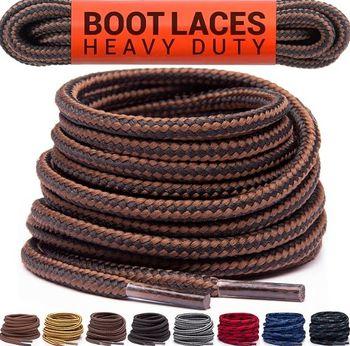
They perform well on the trail, and the outer polyester layer provides excellent friction and doesn’t slip either, even when they get wet. If you are looking for one all-around pair of quality laces, then go for Miscly Round Boot Laces; you won’t be disappointed.
2. DELELE Round Wave Shape Laces
The DELELE Round Wave Shape Laces are another quality and affordable pair of boot laces that work well with shoes and boots. Made from 100% polyester, these don’t skid ever while you climb the mountain.
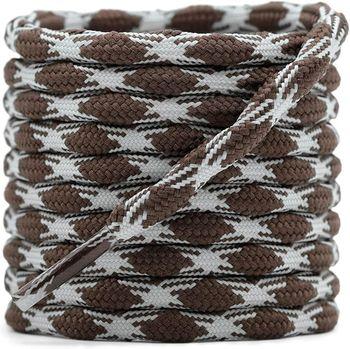
One drawback is that these laces are not water resistant, so expect poor performance during rainy weather. Overall, these are high-quality laces that offer value for the money.
3. Lock Laces Elastic No-Tie Shoelaces
Do you hate tying your shoelaces again and again? If so, Lock Laces Elastic No-Tie Shoelaces are a great option for you. The elastic design provides enough stretch to adjust easily for your foot size.
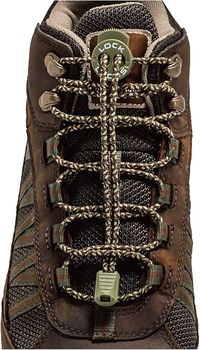
On top of that, these laces are durable and work well during rigorous hiking and trekking. If you are looking for a hassle-free lacing system, then don’t look further than these laces.
4. Stepace Round Shoelaces
Stepace Round Shoelaces are great lace-up style laces for hiking and sports boots. These round shoelaces are made entirely of polyester and provide excellent traction to prevent slipping in wet weather.
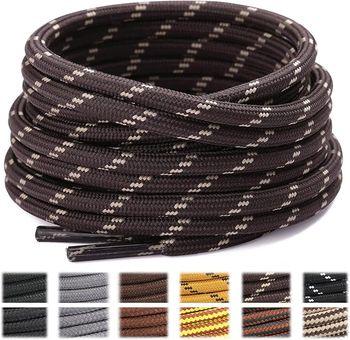
You can find the matching color easily from the various available colors and styles. I like their professional and mature look, which enhances the appearance of boots. These are also slightly cheaper than the other models reviewed, so a good option if you are on a budget.
How to Choose Hiking Boot Laces
Types of Hiking Boot Laces
Have you noticed the design of your boots or shoelaces? We usually don’t examine them or even try to think about them (except the length, if it’s too long or short).
Now, you might be interested in knowing the different designs and the main characteristics of each design:
- Flat Laces: These are wide and flat laces. They fit securely and don’t slip, even during uphill or downhill hiking.
- Round Laces: Round-shaped laces are common for lightweight hiking boots, but you need to be careful not to choose one that slips easily.
- Reflective Laces: Come with reflective fibers woven in for visibility if you want. Personally, I don’t like them much.
- Paracord Laces: Strong, multi-purpose paracord laces. My favorite is the one I use to tie my tent and stuff sacks during hiking.
- Elastic Laces: These are stretchy laces that allow you to adjust the fit easily. However, they are not mainly suitable for tough hiking.
Material
The most important consideration for hiking boot lace is material. You’ll want a material that is durable, lightweight, and water-resistant. The most common materials that you will see in socks are:
- Nylon
- Polyester
- Leather
- Cotton
Pick the laces that are made from nylon and polyester, which are not only durable but lightweight. You’ll also want quality and durable laces to avoid embarrassment on the trail.
For example, while hiking with my Adidas Hyperturf adventure hiking shoes, my laces wore out after just a few uses, which was surprising for me.
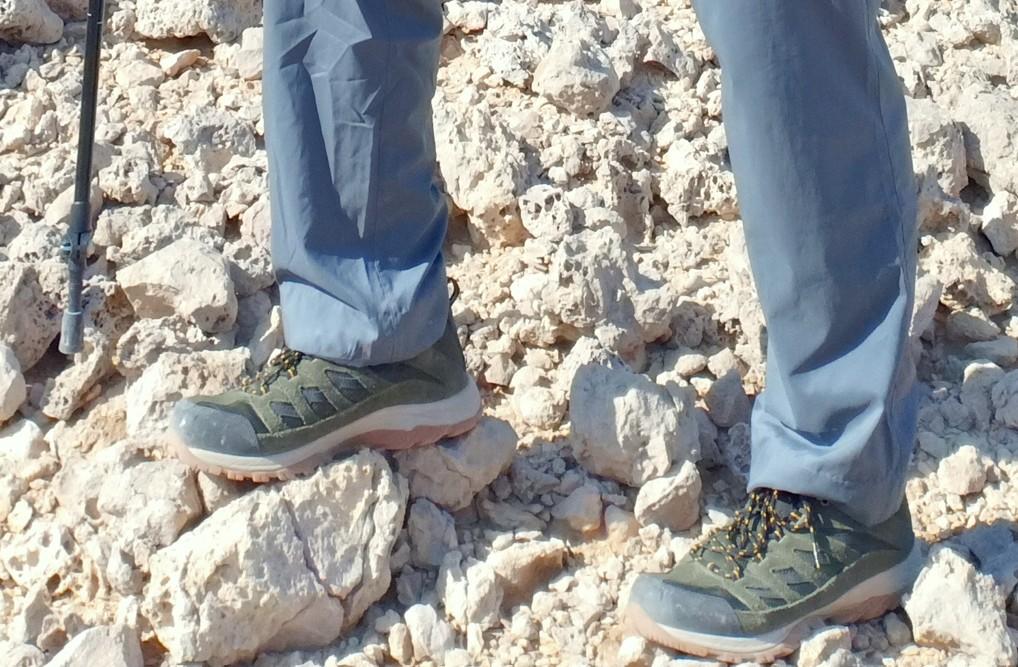
Select your lace material based on the terrain you will hike and the duration of the hike. For instance, you can use cotton laces for short or quick hikes. But they are not durable and suitable for rigorous hiking. If these laces get wet, they will soak up water and degrade the hiking performance.
On the other hand, nylon and polyester are highly water resistant and ideal for wet conditions as well. I hike regularly and never take cotton laces, even for short hikes. Some hikers like leather laces for a traditional and rugged look. However, I don’t prefer them because they get stiffened over time, requiring occasional conditioning.
Length Considerations
It’s very important that you consider the lace length carefully according to your boot or shoe style. To make it a little simpler, I have created a table below with different types of boots and the best length of each design.
As you can see in the table, the number of eyelets and boot design directly impact the decision-making. I make sure the laces are neither too long, which would require folding, nor too short to tie properly.
Here’s a table summarizing how to choose the right lace length for different boot types:
| Boot Type | Eyelet Count | Recommended Lace Length | Lacing Pattern Considerations |
| Low-Cut Boots | 6-8 eyelets | 45 – 54 inches (114 – 137 cm) | Standard crisscross lacing works well; shorter laces for snug fit. |
| Mid-Cut Boots | 8-10 eyelets | 54 – 63 inches (137 – 160 cm) | Standard crisscross or loop lacing; medium length for ankle support. |
| High-Cut Boots | 10-12 eyelets | 63 – 72 inches (160 – 183 cm) | Loop or crisscross lacing, longer laces for extra ankle support. |
| Tall or Mountaineering Boots | 12+ eyelets | 72 inches or more (183+ cm) | Longer laces needed for extra loops and taller boots. |
Grip and Traction
Boot comfort depends on fit, and laces play a role in the fitting. Unfortunately, many laces’ textures do not provide the ample grip needed for hiking footwear.
Why bother about the grip and traction of the laces? Textured laces can improve knot retention and prevent them from slipping from their position. If you hike downhill, you will see that your feet put pressure on the upper and front parts of the boot.
During hiking (especially in rain, snow, and mud), poor-quality laces can become slippery when wet, causing knots to loosen. Textured laces, like those made from paracord, woven laces, or with a waxed coating, provide ample grip.
Having suffered with slippery laces, I know how uncomfortable it can become to keep tightening your laces on the trail.
How to Maintain Your Hiking Boot Laces
Believe it or not, most of us just don’t care about laces. I have seen people on the trail with nice and clean boots but dirty laces. Honestly, removing the lacing of the laces from the boots and then cleaning is not an easy task most people want to do. I also do the same and try to clean laces only after a few hikes.
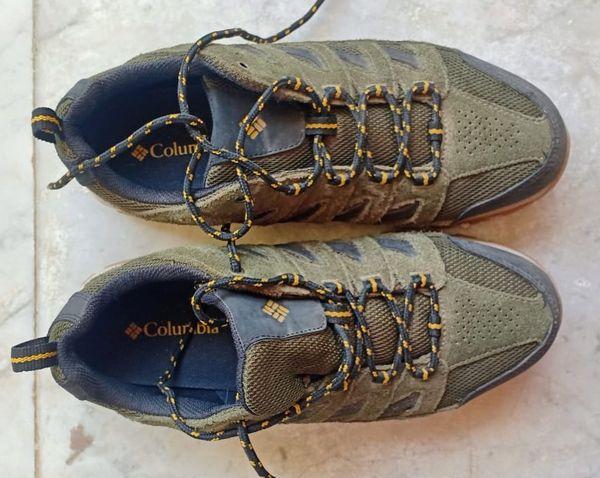
How should you care for your laces? You should remove laces after each hike, especially hikes on muddy, rough, and wet trails. Rinse them off with clean water to remove dirt and mud. If you see they are dirtier, soak them in soapy water and use a soft brush to remove the dirt. After cleaning, air-dry your laces instead of using hairdryers or heaters, as they might shrink.
If you notice that the laces are starting to wear at the edge, which is common, don’t throw them. Just melt the corner with a lighter for a couple of seconds, and heat will fuse the fibers together and prevent further unraveling.
Over time, laces will naturally wear out; you can replace them. However, some companies give a lifetime warranty on their laces, which shows the quality of those laces.
Summary
That’s all. I have reviewed the best laces for boots, which are durable, good-looking, and the highest rated. Always pay attention to your laces, especially the ones that come with the new boots. Never compromise on the laces quality, as the boots take a lot of beating during hiking, and quality laces should fit comfortably and stay in place.
If you want to buy any other laces, then make sure you stay away from the cotton and frictionless laces. Look at the laces texture carefully (to make sure it’s not slippery). Polyester, nylon, and synthetic material laces are generally durable and better options for outdoor adventure shoes.
New laces can improve comfort, but nothing replaces a proper break-in—check out How to Break in Hiking Boots for a complete walk-in strategy.
Read More
